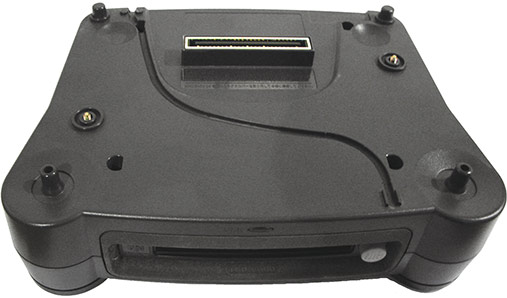Gaming The System: Rare and unreleased: Gaming's strangest consoles
 CREDIT: THE JEDI
CREDIT: THE JEDIWhy bother; the 64DD's medium stored less than CDs and held less than cartridges. Not a solution, but a problem of its own.
The world of video games is full of oddities for not everything released fits the conventional bill of insert game, hit play. Here are some of the stranger gaming consoles released by non-obscure outfits – gaming giants Sony, Nintendo, Microsoft and Sega.
Family Computer Disk System (Japan only)
This Japan-exclusive add-on for the Famicom (Nintendo Entertainment System) allowed for the use of games stored on a special custom floppy disk rather than the costlier- to-manufacture cartridge medium. While this allowed for some unique, exclusive features, such as battery-less game saving for titles like The Legend of Zelda, the faulty hardware and even less reliable floppies would prove to be the systems’ undoing, at least for the sake of its North American release. Interestingly, the game Doki Doki Panic, which served as the basis for the North American version of Super Mario Bros. 2, was initially released as a FCDS exclusive.
Famicom Modem (Japan only)
Yet another Japan-exclusive addon, players could actually connect to a server with a bulletin board that provided the latest in gaming news, the weather and – believe it or not – an extremely early prototype of what we consider downloaded content today.
Dreamcast DVD Drive (unreleased)
Dreamcast, oh Dreamcast. The favorite story of woe told countless many times in gaming circles. Hailed as one of the most undeservingly tragic consoles of the sixth generation of gaming, despite the strong start, crashed and burned with the announcement and release of the PlayStation 2. Arguably one of the biggest strengths of the PS2 was its ability to function as a DVD player, making for a lucrative purchase in a time where standalone players could cost up to $600. Sega, recognizing the importance of the medium, proposed a secondary add-on for existing Dreamcast consoles, with an updated future Dreamcast model with the ability to play DVDs already built in. It was still too late, with nothing more than an empty prototype shell being the only existing proof of this life support for a dying console.
Nintendo 64DD (Japan only)
Probably one of the most unnecessary peripherals for the Nintendo 64, or any console really, the DD was essentially an expansion port that accepted custom-made magnetic disks. It was meant to assuage the complaints from developers that the N64’s cartridge was simply too low in capacity for more ambitious games. However, the 64DD’s magnetic disc space of 64 MB (compared to the maximum 16 MB of the cartridge) was still short of the 650-700 MB offered by CD-ROMs on rival Sony and Sega consoles. The 64DD flopped with a small, small library of titles that fell on the wayside or were re-released on cartridges, and it never saw light outside of Japan.













